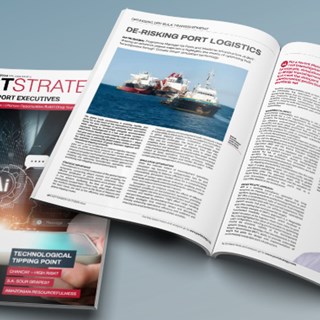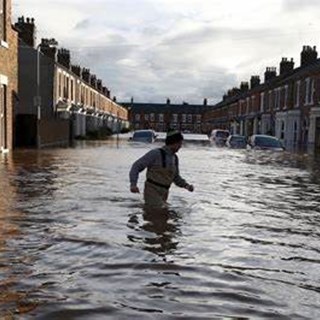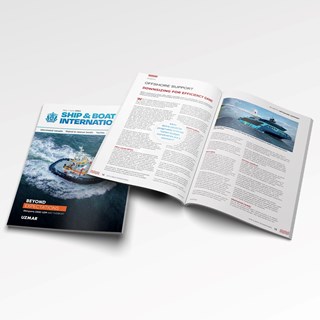
Climate and airports: not just responsible but vulnerable
How should airports protect against climate risk? Greg Fisk discusses issues surrounding climate resilience for airports.
8 December 2022
Climate change is a big issue for airports. While emphasis continues to be placed on sustainability, decarbonisation, and the development of alternative aviation fuels to reduce carbon emissions, the physical risks from the climate crisis are also shaping the future of airports.
In a practical sense, this means ensuring that new infrastructure and airport expansion avoids or otherwise minimises the impacts from climate and natural hazards, now and into the future. Measures can involve raising the design height of runways, taxiways and terminals to provide flood immunity; building protection works such as seawalls to protect new assets from storm tide; or managing vegetation on and adjacent to the airport to reduce bushfire and smoke risk to operations. Climate was an early consideration in the design of Brisbane Airport's New Parallel Runway project in the 2010s, for example. This included mitigations to raise the fill level of the runway and taxiways and a raised and improved seawall.
However, managing the risk to existing assets, operations and workforces on airports is far more challenging. Retreat or relocation is not an option for most airports, given their strategic location, complex flightpath architecture and relationship to other land uses. Many airports are also situated in floodplains or have densely vegetated areas in their buffer zones, increasing the exposure of existing assets to risks from longer-term, chronic climate impacts related to sea level rise, increased intense rainfall and fire risk from higher temperatures and drought.
A key driver for action on climate risk comes from the rise of ESG and the requirements of sustainability reporting frameworks such as GRESB and the Financial Stability Board's (FSB's) guidance related to the Taskforce on Climate-Related Financial Disclosure (TCFD).
In light of the disruptions to the industry already caused by COVID, owners and investors in airports are acutely focused on the problem of how climate risk is affecting their assets' performance and their current and future revenues - and also on the need for a bigger capital investment pipeline for retrofitting and protecting airport assets.
Many airport organisations are therefore taking first steps toward resilience and adaptation planning. To this end, they should be conscious that:
There is a plethora of climate-trend data available, downscaled to a regional or local level, that can be used to inform airport-level risk assessment and planning. This data provides predictions, using global weather models, of how different aspects of climate change over time, covering a wide range of metrics such as changes to global average temperature, change in rainfall volume or seasonality, changes in the frequency and intensity of storms such as hurricanes or cyclones and predictions of sea level rise. The latest IPCC assessment report (AR6), which was released in late 2021, provides global IPCC data and analysis that is then 'downscaled' for use by nation-states, which publish national, regional and, in some cases, local climate data and trends. These data sets, trends and projections are generally available for use free of charge, and maintained by national government science agencies such as the UK Met Office, the US National Oceanic and Atmospheric Administration (NOAA) and the Bureau of Meteorology (BOM) and CSIRO in Australia.
In many jurisdictions, airport facilities are included in more detailed natural hazard studies and investigations undertaken by government agencies, offering the ability to access the outputs of modelling and mapping. This can include flood mapping, erosion, storm tide mapping, bushfire mapping, heat mapping, and other hazard information. Hazard maps are typically included as part of statutory local government planning schemes and other local planning instruments but also can be the subject of specific technical hazard assessment studies.
There is existing and emerging guidance available for the sector about climate risk and resilience - including guidelines for specific contexts produced by BMT, and applicable international guidance from Airports Council International (ACI).
In many cases, there is an existing understanding of the risks and management of weather events at airport facilities (such as emergency management plans) that can be modified to address the additional risks from climate change.
That said, bespoke site-based risk assessments are a critical tool for enabling owners and operators to understand and discuss the consequence of these trends at the local scale. This level of detail is vital for helping organisations to accurately assess the potential implications of climate on business operations (including costs), their organisational tolerance to these risks over time, and the priorities for action.
Such studies inform the aspects and areas of existing vulnerability to climate change that need priority treatment and guide new development as well as enhancing the resilience of existing infrastructure and operations to climate risk.
As well as offering risk and resilience advisory services, BMT provides high level advice on a broad range of sustainability and environmental issues, including decarbonisation. However, in our experience, many airports are well-advanced on their journey toward decarbonisation, compared with their progress assessing the impacts from physical risks of climate change.
There is, however, an interesting area of intersection between the two, which is the development of green and blue carbon projects. In these, airports and other coastal landowners are looking at the rehabilitation of natural habitats, such as mangrove and saltmarsh areas. Restoring and enhancing these natural environments helps to counterbalance emissions while providing co-benefits in terms of increased biodiversity and the increased resilience of built assets to natural hazards.
Greg Fisk is senior principal consultant, APAC and global, based at BMT's Brisbane office. This article is expanded from a paper he delivered at the Australian Airports Association (AAA) National conference on 16 November 2022, on climate resilience for airports.

To read more on this other topical issues from news editor Vanessa Spedding, visit Environment Analyst.
You can read Vanessa's article here.

Greg Fisk is a Senior Associate at BMT and leads the firm’s global campaign related to climate risk and resilience.
Based in Brisbane, Australia, Greg has over 25 years of experience in natural hazard and climate change planning and adaptation studies with planning, transport, and conservation authorities.

N/A
The DCN spoke to our climate change risk, resilience and adaptation expert about preparing for the impacts of a changing climate.

N/A
With the UK and beyond facing unprecedented consequences from rising water levels and climate amelioration, BMT are helping our clients in their need for flood alleviation, prediction, mapping and mitigation. James While talks about 5 ways we can assist our clients.

Ian McRobbie
In a Port Strategy feature, Ian McRobbie highlights the merits of optimising bulk transshipment through ‘Climate-Smart’ simulation technology, drawing on extensive project experience

Noel Tomlinson - Maritime Design
Noel Tomlinson shares with SBI valuable insights on how BMT's innovative solution can help vessel operators overcome challenges and ensure a sustainable future for offshore wind operations.